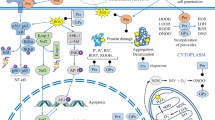Abstract
Diseases activate the innate immune response which causes ancillary damage to the human body. Peroxynitrite (OONO-) or its carbon dioxide derivatives cause oxidation/nitration and hence mutation to various body polymers e.g. DNA, RNA, protein, lipids and sugars. The control of the ancillary damage can come from antioxidants which inhibit control the amount of peroxynitrite available for damage. In this paper we have developed three different levels of antioxidant screening: (i) Peroxynitrite or SIN-1 reaction with luminol to produce light, and the inhibition of light by substances therefore represents antioxidation. (ii) Nicking of plasmid DNA occurs via oxidants: and is prevented by antioxidants. (iii) Detection of plasmid luciferase activity post-oxidation and infection indicates either prevention or repair of damage: via antioxidants. We found green tea and a number of its polyphenolic constituents effective only at the first level of antioxidation, while extracts of various fruit help at all levels antioxidation. In the final analysis, a combination of green tea extracts and fruits is suggested to produce more complete antioxidant protection.
Similar content being viewed by others
Abbreviations
- AUC:
-
Area under the light curve
- EGCG:
-
epigallocatechin gallate
References
McConnell P 2001Green Tea Antioxidants Inhibition of Oxidation and Mutation, M.S. Thesis, Department of Genetics, West Virginia University, Morgantown, WV, USA
Schroeder P, Lars-Oliver K, Buchczyk D P, Sadik C D, Schewe T and Sies H 2001 Epiocatechin selectively prevents nitration but not oxidation reactions of peroxynitrite;Biochem. Biophys. Res. Commun. 285 782–787
Van Dyke K 2002Overview of oxidative stress; inLuminescence biotechnology (eds) K Van Dyke, C Van Dyke and K Woodfork (Boca Raton, FL: CRC Press) pp 381–384
Van Dyke K, McConnell P and Marquardt L 1999 Green tea extract and its polyphenols markedly inhibit luminol-dependent chemiluminescence activated by peroxynitrite or SIN-1;Luminescence 14 1–7
Van Dyke K, McConnell P and Sacks M 2002a A Search to Detect Antioxidants Useful for Treating oxidative stress; inLuminescence biotechnology (eds) K Van Dyke, C Van Dyke and K Woodfork (Boca Raton, FL: CRC Press) pp 417–428
Van Dyke K, Oogle C and Reasor M J 2002b Luciferase luminescence can be used to access oxidative damage to plasmid DNA and its prevention from selected fruit extracts; inLuminescence biotechnology (eds) K Van Dyke, C Van Dyke and K Woodfork (Boca Raton, FL: CRC Press) pp 459–466
Author information
Authors and Affiliations
Corresponding author
Rights and permissions
About this article
Cite this article
McConnell, P.S., Reasor, M.J. & Van Dyke, K. Three model systems measure oxidation/nitration damage caused by peroxynitrite. J. Biosci. 28, 71–76 (2003). https://doi.org/10.1007/BF02970134
Published:
Issue Date:
DOI: https://doi.org/10.1007/BF02970134




